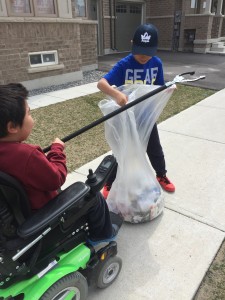
It’s Spring. At least that’s what the calender and the weather are telling us. Dust has replaced the snow on the playground. Tell that to our playground grass fields still resisting the urge to grow too soon. Judging by the pale straw colour a field of green is still 6 weeks out. Somehow nature has equipped itself for a chilling frost or Spring blizzard that could be only a Colorado Low or Polar Vortex away.
Hopefully, March exits like a lamb and not like a lamb being chased by a lion. At this time of year, hope, like the temperature rises and with it the rain to wash away the remnants of Winter. Hope is the promise of Spring. Warm temps, more sunshine, daylight savings, chirping birds, sap running, and buds bursting on trees cannot be missed. There are great things waiting outside the doors of our classrooms. Teachers need to enjoy them. Our students need Spring and all of its promises even more.
To no one’s surprise since the Vernal Equinox, the classroom has become a livelier place each time the warm breezes blow. Students are absorbing the Vitamin D and converting it into boundless energy. It’s like an alarm goes off the moment the snow melts and the clocks move forward. March Break has come and gone and the realization that nearly 70 percent of the school year is in and out of the books. It’s as if that once the weight of snow suits and winter boots is shed, our students have been given permission to chirp, run, and burst with energy. It should not be missed.
With all of this vivacious vim and vigour I am planning ways to take advantage of outdoor learning, walkabouts, and a little more time in the fresh air. Along with this re-invigoration comes opportunity for distraction too. How we make use of our time outdoors can be a balancing act of classroom management amidst chaos. How we harness that natural energy with our students can lead to effective outdoor fun, positive mental health activities, and memorable learning opportunities.
What this looks like can depend on a number of factors: location, mobility, and volition. In my class we are taking advantage of the good weather by shifting some of our time outside. This is not limited to Physical Education either. Sure it’s fun to do, but there is also room for book talks, journal writing, guided reading/Math groups, and Science.
What I have enjoyed sharing with students on our walk and talkabouts are the changes going on all around us. It has been fun to ask them to comment on something they’ve noticed and to create a broader awareness of the habitats and spaces they occupy at school.
As we venture out, the eyes, ears, and lungs of learners are filled. It may appear that they’ve become distracted by it all, but it is not a distraction. It is more of an awakening of the senses instead and students are excited to discover it again for another year.
In my class, we are playing social games where everyone is involved. This includes our version of Manhunt; now known as Person hunt, SPUD, Chain Tag, Kickball, and Grounders. If possible I try to play in every game rather than watch because it engages students even more to see their teacher(as able) running, laughing, getting caught, and playing alongside.
You’ve read enough. Time to go outside and get distracted with your class. Happy Spring.
Please share how your class enjoys its outdoor time in the comments section below. Thank you for reading.




